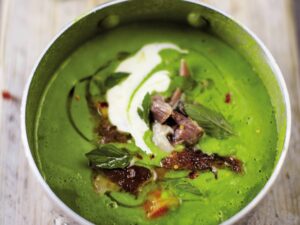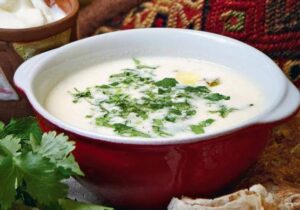About Locro Soup:-
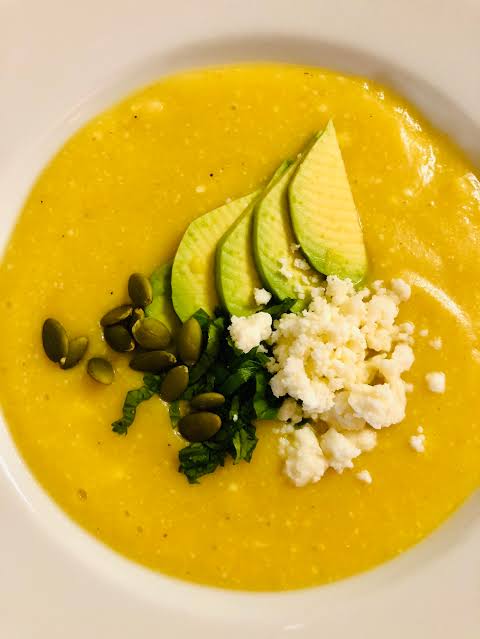
Locro is a traditional soup or stew commonly found in several South American countries, especially in the Andean regions of Argentina, Bolivia, Ecuador, Peru, and Colombia. Each country and region has its own variation of the dish, but there are some common elements that tie them together.
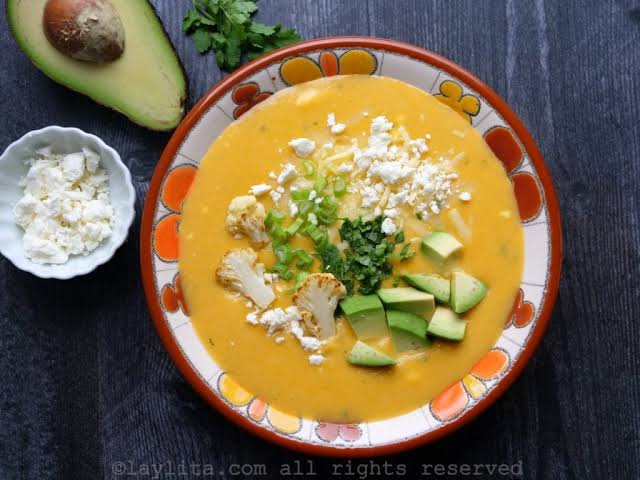
key Characteristics of locro soup:-
The key characteristics of locro soup include:
- Hearty and Thick Texture:
- Locro is known for its rich, thick consistency, achieved through slow cooking of starchy ingredients like potatoes, squash, and corn. The soup is more like a stew due to its density.
- Core Ingredients:
- Corn (hominy or dried white corn): Provides a unique texture and is a staple ingredient in most locro variations.
- Potatoes and/or Squash: These ingredients contribute to the soup’s thick, creamy texture.
- Meat: Commonly includes beef, pork, or chicken. In Argentina, chorizo or tripe might be added.
- Beans: Some variations include beans, such as fava beans or lima beans.
- Rich, Savory Flavor:
- Locro features a deep, savory flavor profile, often enhanced with onions, garlic, cumin, and paprika. The use of ají (chili pepper) adds a subtle or strong heat depending on the recipe.
- Regional Variations:
- Each region or country has its own take on locro, reflecting local ingredients and culinary traditions. For example, Ecuadorian locro often includes cheese and avocado, while Argentine locro might include pork and chorizo.
- Slow-Cooked:
- Locro is typically prepared slowly, allowing the ingredients to break down and meld together, creating a dish that is both flavorful and hearty.
- Cultural Significance:
- Locro is more than just a meal; it’s often associated with national identity and tradition, particularly in Argentina, where it is served during patriotic celebrations.
- Serving Style:
- Locro is usually served hot and can be garnished with ingredients like cheese, avocado, or a spicy sauce, depending on the region.

popular variations of locro soup:-
Locro soup has several popular variations across South America, each reflecting the unique culinary traditions of its region. Here are some of the most well-known versions:
1. Locro Argentino (Argentina)
- Key Ingredients: Dried corn (maize), potatoes, squash (pumpkin), pork, chorizo, tripe, and sometimes beef.
- Flavor Profile: Rich, savory, and hearty, often with a slightly spicy kick from paprika and other seasonings.
- Garnishes: Typically served with a spicy sauce called quiquirimichi, made from paprika, chili, green onions, and oil.
- Cultural Context: Commonly eaten on national holidays like May 25th, Argentina’s National Day.
2. Locro de Papas (Ecuador)
- Key Ingredients: Potatoes, onions, garlic, cumin, cheese, and milk or cream.
- Flavor Profile: Creamy and comforting, with a mild and slightly tangy flavor from the cheese.
- Garnishes: Often topped with slices of avocado and a sprinkle of fresh cheese. Some versions add ají (Ecuadorian chili pepper) for heat.
- Cultural Context: A popular everyday dish, especially in the highlands of Ecuador.
3. Locro de Zapallo (Peru)
- Key Ingredients: Squash (zapallo), potatoes, garlic, onions, and sometimes corn or fava beans. It may also include beef or chicken.
- Flavor Profile: Sweet and savory, with a rich texture from the squash.
- Garnishes: Typically served with white rice or bread on the side.
- Cultural Context: Often made as a comforting family meal, especially during colder months.
4. Locro Boliviano (Bolivia)
- Key Ingredients: Potatoes, corn, pork, and various regional vegetables.
- Flavor Profile: Savory and slightly spicy, depending on the use of local peppers and seasonings.
- Garnishes: Frequently topped with fresh herbs or a side of llajwa (Bolivian spicy sauce).
- Cultural Context: A staple in rural areas, reflecting the country’s agrarian roots.
5. Locro Norteno (Northern Argentina)
- Key Ingredients: Similar to Locro Argentino but often includes a higher proportion of local Andean ingredients like quinoa or locoto peppers.
- Flavor Profile: Spicy and hearty, with more intense flavors due to the use of regional spices and chilies.
- Garnishes: Quiquirimichi or fresh herbs like parsley and cilantro.
- Cultural Context: Reflects the indigenous culinary traditions of the Andean regions of Argentina.
6. Locro de Mondongo (Chile)
- Key Ingredients: Tripe (mondongo), potatoes, squash, and corn, with a variety of spices.
- Flavor Profile: Rich and intensely savory, with a slightly chewy texture from the tripe.
- Garnishes: Often served with a spicy sauce or fresh herbs.
- Cultural Context: Considered a hearty dish, often served in rural areas.
7. Locro de Castilla (Colombia)
- Key Ingredients: Similar to other locros but may include more tropical ingredients like plantains and yuca (cassava).
- Flavor Profile: A mix of sweet and savory, with a thicker consistency due to the use of starchy root vegetables.
- Garnishes: Served with avocado, cheese, or a side of rice.
- Cultural Context: Commonly made in the Andean and coastal regions of Colombia, reflecting the diverse agricultural products of the area.
optional ingradient for locro soup:-
Locro soup is versatile, allowing for various optional ingredients to be added based on regional preferences or personal taste. Here are some commonly used optional ingredients:
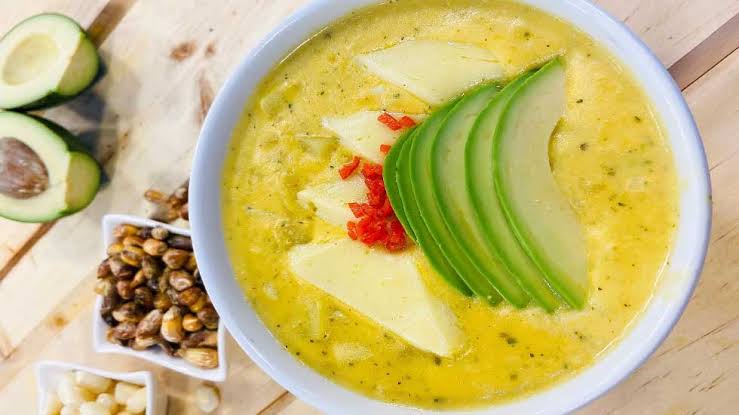
1. Cheese
- Type: Fresh, crumbly cheeses like queso fresco or feta.
- Use: Often added to Ecuadorian locro de papas for a creamy, tangy flavor.
2. Avocado
- Use: Sliced or diced avocado is a common topping in Ecuadorian locro de papas, adding a smooth, rich texture.
3. Ají (Chili Pepper)
- Types: Ají amarillo (yellow chili), ají rojo (red chili), or other local varieties.
- Use: Added to the soup or served as a side sauce to add heat and spice.
4. Quinoa
- Use: Sometimes added in Andean regions to enhance the nutritional value and add a slightly nutty flavor.
5. Beans
- Types: Fava beans, lima beans, or white beans.
- Use: Common in Argentine and Ecuadorian variations, adding extra protein and texture.
6. Peas
- Use: Can be added for a sweet, fresh flavor, particularly in spring or summer versions of the dish.
7. Carrots
- Use: Diced or sliced carrots can be added for sweetness and color.
8. Yuca (Cassava)
- Use: Particularly in Colombian or tropical variations, yuca adds a starchy, slightly sweet component to the soup.
9. Tripe (Mondongo)
- Use: A popular addition in some Argentine and Chilean versions, tripe adds a chewy texture and rich flavor.
10. Pumpkin Seeds (Pepitas)
- Use: Toasted pumpkin seeds can be sprinkled on top for a crunchy texture and nutty flavor.
11. Cilantro or Parsley
- Use: Fresh herbs like cilantro or parsley can be added as a garnish for a burst of freshness.
12. Rice
- Use: Some versions serve locro with a side of white rice or even mix it into the soup for additional bulk.
13. Smoked Paprika
- Use: Adds a smoky, slightly spicy flavor, often used in place of or in addition to regular paprika.
14. Chorizo
- Use: In Argentine versions, slices of chorizo sausage can add a spicy, savory element to the dish.
15. Bell Peppers
- Use: Diced bell peppers add sweetness and color, making the soup more vibrant.
Ingredients:

Dried white corn (hominy): 250g
Dried white beans (like lima or cannellini): 150g
Pork shoulder: 300g
Chorizo sausage: 200g
Beef short ribs: 300g
Pumpkin or butternut squash: 400g (peeled and diced)
Potatoes: 300g (peeled and diced)
Onion: 200g (about 1 medium onion, diced)
Garlic: 10g (about 3 cloves, minced)
Paprika: 10g
Cumin: 5g
Bay leaves: 2-3 leaves
Vegetable or beef broth: 1.5 liters
Salt: 10g (adjust to taste)
Black pepper: 5g
Lard or vegetable oil: 30g
Green onions: 50g (for garnish)
Smoked paprika (optional): 5g
Quiquirimichi sauce (optional): Prepared separately
BEST AFGANI SOUP RECIPE: Best Buttermilk recipe
Process of making:-
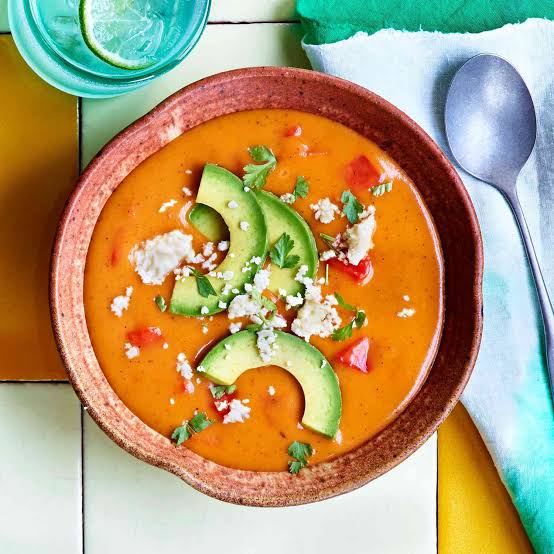
Preparation:
- Soak the dried white corn and beans in water overnight (at least 8 hours). Drain and rinse before using.
Cooking the Meat:
- In a large pot, heat the lard or oil over medium heat. Add the onions and garlic, and sauté until they are soft and translucent, about 5 minutes.
- Add the pork shoulder and beef short ribs, and brown the meat on all sides.
- Add the chorizo and cook for another 5 minutes, allowing the flavors to meld.
Simmering the Soup:
- Add the soaked corn and beans to the pot.
- Pour in the broth, and bring the mixture to a boil. Once boiling, reduce the heat to low, cover, and let it simmer for about 1 hour.
- Add the pumpkin and potatoes to the pot, along with the paprika, cumin, bay leaves, salt, and pepper.
- Continue to simmer for another 1 to 1.5 hours, stirring occasionally, until the meat is tender, and the vegetables have broken down to thicken the soup.
Final Touches:
- Taste the locro and adjust the seasoning with more salt and pepper if needed.
- Remove the bay leaves before serving.
Serving:
- Serve the locro hot, garnished with sliced green onions.
- Optionally, drizzle with quiquirimichi sauce or sprinkle with smoked paprika for extra flavor.
Eating locro soup offers several advantages, both in terms of nutrition and cultural experience. Here are some of the key benefits:
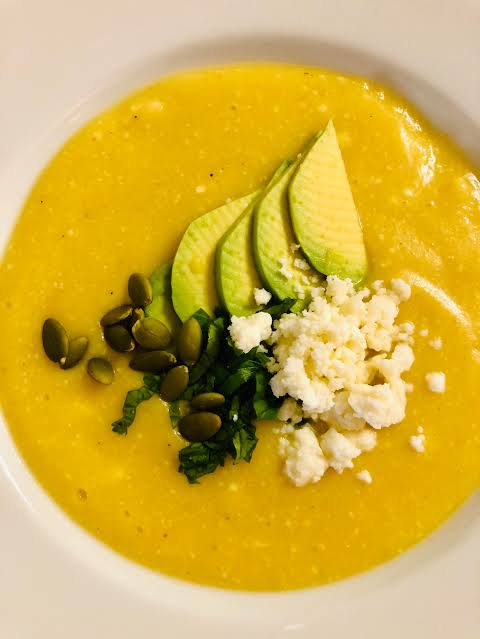
1. Nutritional Value:
- Rich in Vitamins and Minerals: Locro soup, especially versions containing squash, potatoes, and corn, provides essential vitamins like vitamin A (from squash), vitamin C, and B vitamins, as well as minerals such as potassium, magnesium, and iron.
- High in Fiber: Ingredients like beans, corn, and vegetables add a good amount of dietary fiber, which aids in digestion, helps regulate blood sugar levels, and promotes heart health.
- Protein-Packed: With the inclusion of meats like pork, beef, or chicken, as well as beans, locro provides a good source of protein, essential for muscle repair, immune function, and overall body maintenance.
- Complex Carbohydrates: The starchy vegetables and corn in locro are excellent sources of complex carbohydrates, providing sustained energy and helping to stabilize blood sugar levels.
2. Satiety and Comfort:
- Hearty and Filling: Locro is a thick, hearty soup that is very satisfying, making it a great meal for colder weather or when you need a comforting, filling dish.
- Balanced Meal: With its combination of protein, fiber, healthy fats, and carbohydrates, locro can serve as a balanced meal, reducing the need for additional sides.
3. Cultural Connection:
- Cultural Heritage: Eating locro is a way to connect with South American culinary traditions, particularly those of the Andean regions. It’s a dish often enjoyed during national holidays and family gatherings, making it culturally significant and a great way to experience local traditions.
- Community and Sharing: Traditionally, locro is a communal dish, often made in large batches and shared with family and friends, fostering a sense of community and togetherness.
4. Versatility:
- Adaptable to Dietary Preferences: Locro can be modified to fit various dietary needs. For example, it can be made vegetarian by omitting the meat or vegan by substituting broth and removing dairy-based toppings.
- Seasonal Flexibility: The ingredients in locro can be adjusted based on seasonal availability, allowing for variations that take advantage of fresh, local produce.
5. Health Benefits:
- Heart Health: The fiber from beans and vegetables, combined with the potential inclusion of lean meats, can support cardiovascular health by lowering cholesterol levels and reducing blood pressure.
- Immune Support: The garlic, onions, and other vegetables in locro contain antioxidants and immune-boosting compounds that help protect against illness.
6. Energy and Warmth:
- Energizing: The combination of protein, complex carbs, and healthy fats provides sustained energy, making locro a great choice for physically demanding days or activities.
- Warming Effect: As a hot, thick soup, locro is ideal for warming up on cold days, making it a comfort food in cooler climates.
7. Economical and Sustainable:
- Affordable Ingredients: Locro is made with simple, readily available ingredients like potatoes, squash, and beans, making it an economical choice for feeding a family or group.
- Minimal Waste: The use of whole vegetables, beans, and even tougher cuts of meat ensures that all parts of the ingredients are utilized, reducing food waste.
Overall, locro soup is a nutritious, comforting, and culturally rich dish that offers a range of health benefits and is adaptable to different tastes and dietary needs.
Eating locro soup offers several advantages, both in terms of nutrition and cultural experience. Here are some of the key benefits:
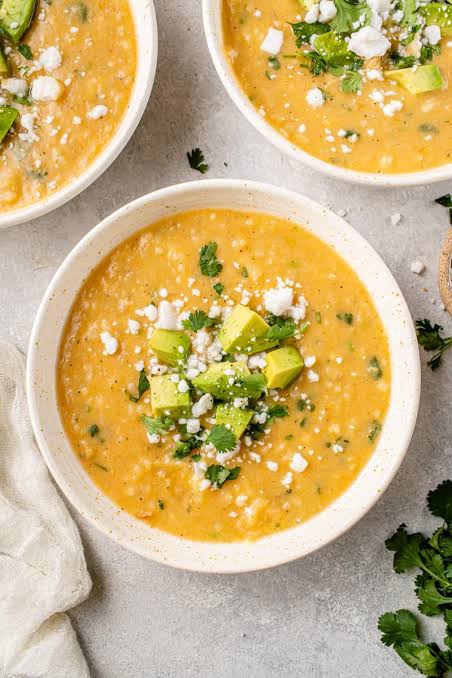
1. Nutritional Value:
- Rich in Vitamins and Minerals: Locro soup, especially versions containing squash, potatoes, and corn, provides essential vitamins like vitamin A (from squash), vitamin C, and B vitamins, as well as minerals such as potassium, magnesium, and iron.
- High in Fiber: Ingredients like beans, corn, and vegetables add a good amount of dietary fiber, which aids in digestion, helps regulate blood sugar levels, and promotes heart health.
- Protein-Packed: With the inclusion of meats like pork, beef, or chicken, as well as beans, locro provides a good source of protein, essential for muscle repair, immune function, and overall body maintenance.
- Complex Carbohydrates: The starchy vegetables and corn in locro are excellent sources of complex carbohydrates, providing sustained energy and helping to stabilize blood sugar levels.
2. Satiety and Comfort:
- Hearty and Filling: Locro is a thick, hearty soup that is very satisfying, making it a great meal for colder weather or when you need a comforting, filling dish.
- Balanced Meal: With its combination of protein, fiber, healthy fats, and carbohydrates, locro can serve as a balanced meal, reducing the need for additional sides.
3. Cultural Connection:
- Cultural Heritage: Eating locro is a way to connect with South American culinary traditions, particularly those of the Andean regions. It’s a dish often enjoyed during national holidays and family gatherings, making it culturally significant and a great way to experience local traditions.
- Community and Sharing: Traditionally, locro is a communal dish, often made in large batches and shared with family and friends, fostering a sense of community and togetherness.
4. Versatility:
- Adaptable to Dietary Preferences: Locro can be modified to fit various dietary needs. For example, it can be made vegetarian by omitting the meat or vegan by substituting broth and removing dairy-based toppings.
- Seasonal Flexibility: The ingredients in locro can be adjusted based on seasonal availability, allowing for variations that take advantage of fresh, local produce.
5. Health Benefits:
- Heart Health: The fiber from beans and vegetables, combined with the potential inclusion of lean meats, can support cardiovascular health by lowering cholesterol levels and reducing blood pressure.
- Immune Support: The garlic, onions, and other vegetables in locro contain antioxidants and immune-boosting compounds that help protect against illness.
6. Energy and Warmth:
- Energizing: The combination of protein, complex carbs, and healthy fats provides sustained energy, making locro a great choice for physically demanding days or activities.
- Warming Effect: As a hot, thick soup, locro is ideal for warming up on cold days, making it a comfort food in cooler climates.
7. Economical and Sustainable:
- Affordable Ingredients: Locro is made with simple, readily available ingredients like potatoes, squash, and beans, making it an economical choice for feeding a family or group.
- Minimal Waste: The use of whole vegetables, beans, and even tougher cuts of meat ensures that all parts of the ingredients are utilized, reducing food waste.
Overall, locro soup is a nutritious, comforting, and culturally rich dish that offers a range of health benefits and is adaptable to different tastes and dietary needs.
Advantage of eating lacro soup:-
Eating locro soup offers several advantages, both in terms of nutrition and cultural experience. Here are some of the key benefits:
1. Nutritional Value:
- Rich in Vitamins and Minerals: Locro soup, especially versions containing squash, potatoes, and corn, provides essential vitamins like vitamin A (from squash), vitamin C, and B vitamins, as well as minerals such as potassium, magnesium, and iron.
- High in Fiber: Ingredients like beans, corn, and vegetables add a good amount of dietary fiber, which aids in digestion, helps regulate blood sugar levels, and promotes heart health.
- Protein-Packed: With the inclusion of meats like pork, beef, or chicken, as well as beans, locro provides a good source of protein, essential for muscle repair, immune function, and overall body maintenance.
- Complex Carbohydrates: The starchy vegetables and corn in locro are excellent sources of complex carbohydrates, providing sustained energy and helping to stabilize blood sugar levels.
2. Satiety and Comfort:
- Hearty and Filling: Locro is a thick, hearty soup that is very satisfying, making it a great meal for colder weather or when you need a comforting, filling dish.
- Balanced Meal: With its combination of protein, fiber, healthy fats, and carbohydrates, locro can serve as a balanced meal, reducing the need for additional sides.
3. Cultural Connection:
- Cultural Heritage: Eating locro is a way to connect with South American culinary traditions, particularly those of the Andean regions. It’s a dish often enjoyed during national holidays and family gatherings, making it culturally significant and a great way to experience local traditions.
- Community and Sharing: Traditionally, locro is a communal dish, often made in large batches and shared with family and friends, fostering a sense of community and togetherness.
4. Versatility:
- Adaptable to Dietary Preferences: Locro can be modified to fit various dietary needs. For example, it can be made vegetarian by omitting the meat or vegan by substituting broth and removing dairy-based toppings.
- Seasonal Flexibility: The ingredients in locro can be adjusted based on seasonal availability, allowing for variations that take advantage of fresh, local produce.
5. Health Benefits:
- Heart Health: The fiber from beans and vegetables, combined with the potential inclusion of lean meats, can support cardiovascular health by lowering cholesterol levels and reducing blood pressure.
- Immune Support: The garlic, onions, and other vegetables in locro contain antioxidants and immune-boosting compounds that help protect against illness.
6. Energy and Warmth:
- Energizing: The combination of protein, complex carbs, and healthy fats provides sustained energy, making locro a great choice for physically demanding days or activities.
- Warming Effect: As a hot, thick soup, locro is ideal for warming up on cold days, making it a comfort food in cooler climates.
7. Economical and Sustainable:
- Affordable Ingredients: Locro is made with simple, readily available ingredients like potatoes, squash, and beans, making it an economical choice for feeding a family or group.
- Minimal Waste: The use of whole vegetables, beans, and even tougher cuts of meat ensures that all parts of the ingredients are utilized, reducing food waste.
nutritional value in lucro soup:-
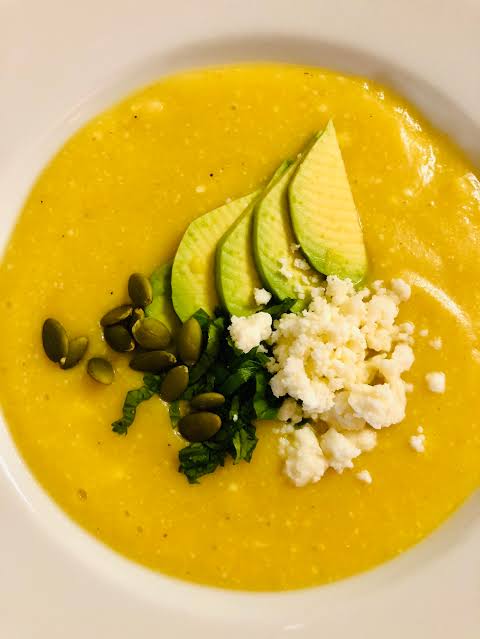
The nutritional value of locro soup can vary based on the specific ingredients used and their quantities. Here’s a general breakdown of the nutritional content for a standard serving (about 1 bowl or 350g) of traditional Argentine locro soup, made with ingredients like pork, chorizo, potatoes, squash, beans, and corn.
Approximate Nutritional Values per Serving (350g):
- Calories: 400-500 kcal
- Protein: 20-25g
- Fat: 20-25g
- Saturated Fat: 6-8g
- Carbohydrates: 40-50g
- Fiber: 8-10g
- Sugars: 6-8g
- Cholesterol: 40-60mg
- Sodium: 700-900mg (varies based on salt content and sausage)
- Vitamins and Minerals:
- Vitamin A: 100-150% of the Recommended Daily Allowance (RDA) (from squash)
- Vitamin C: 20-30% of the RDA (from potatoes and vegetables)
- Vitamin B6: 10-15% of the RDA
- Folate: 10-15% of the RDA
- Iron: 15-20% of the RDA
- Potassium: 15-20% of the RDA
- Magnesium: 10-15% of the RDA
- Calcium: 8-10% of the RDA
Breakdown of Nutrients:
- Calories:
- The calorie content of locro comes from a combination of protein (from meat and beans), carbohydrates (from potatoes, corn, and squash), and fat (from meat and any added oil or lard).
- Protein:
- Locro provides a good amount of protein, primarily from the meat and beans, essential for muscle repair and overall body function.
- Fat:
- The fat content comes from the meat (particularly chorizo and pork) and any added cooking fats. While some fat is essential, the type and amount can vary depending on the cut of meat used and whether the recipe includes high-fat sausages.
- Carbohydrates:
- Locro is rich in complex carbohydrates from potatoes, squash, and corn, providing sustained energy. The fiber content is also significant, aiding in digestion and promoting heart health.
- Vitamins and Minerals:
- Vitamin A: Abundant in locro due to the presence of squash, which is crucial for vision, immune function, and skin health.
- Vitamin C: Found in potatoes and vegetables, contributing to immune health and skin integrity.
- Iron: Derived from the meat and beans, essential for red blood cell production and oxygen transport.
- Potassium: Helps regulate blood pressure, fluid balance, and muscle function.
- Sodium:
- The sodium content can be relatively high, especially if the soup contains chorizo or if extra salt is added during cooking. It’s advisable to monitor the sodium level for those on low-sodium diets.
1. What is locro soup?
Locro is a traditional South American soup, particularly popular in countries like Argentina, Ecuador, Peru, and Bolivia. It’s a hearty, thick stew made with ingredients like corn, potatoes, squash, and various meats.
2. What are the main ingredients in locro soup?
The main ingredients typically include corn (hominy), potatoes, squash, beans, and meat (such as pork, beef, or chicken). The specific ingredients can vary based on regional variations.
3. Is locro soup spicy?
Locro is generally not very spicy, but some versions may include mild chili peppers or be served with a spicy sauce like quiquirimichi on the side. The level of spiciness can be adjusted to taste.
4. Can locro soup be made vegetarian or vegan?
Yes, locro can be made vegetarian or vegan by omitting the meat and using vegetable broth instead of beef or chicken broth. Beans, squash, potatoes, and corn make it a hearty dish even without meat.
